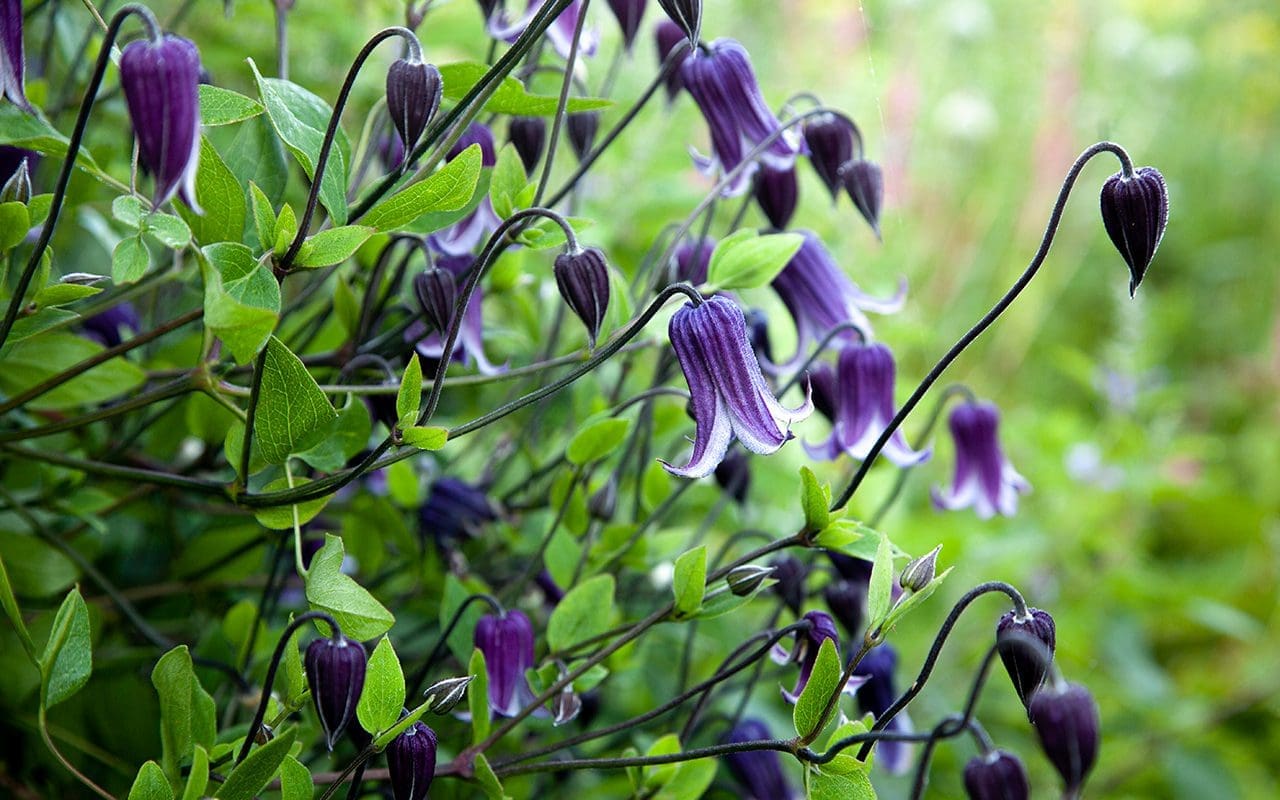
The last few weeks of whipping wind and rain have been painful. It has torn at the poplars at the bottom of the slope, their enormous limbs as heavy as they ever will be in leaf weighted by rain. The tell-tale crack and pregnant pause before the impact saw three limbs the size of trees come crashing to earth. A whole tree gave up a few nights later, to lay between and fortunately not on my young hornbeams, as if the fall had been planned. We will wait until autumn before beginning the enormous task of clearing the wood from where it has shattered amongst the slumbering snowdrops for fear of the weight still up there in the remaining trees and this not being the last limbs down.
The garden has stood the test of our exposed position remarkably well. I stake lightly, preferring the garden to be composed of plants that are not reliant upon us to keep them upright. The wiry stems of the hemerocallis and dierama and the pliable Calamagrostis ‘Karl Foerster’ were almost made for wind and withstand even the rain-laden gales, but the plants that topple when in the full sail of summer growth need assistance. Taller than me, sanguisorba that would splay in a great cartwheel without support and echinops that would derail an area as wide as they are tall if they broke loose from their metal hoops. Staking takes valuable time in the rush to finish the garden work before growth starts in earnest in the spring, but our metal hoops work and are fast to install.
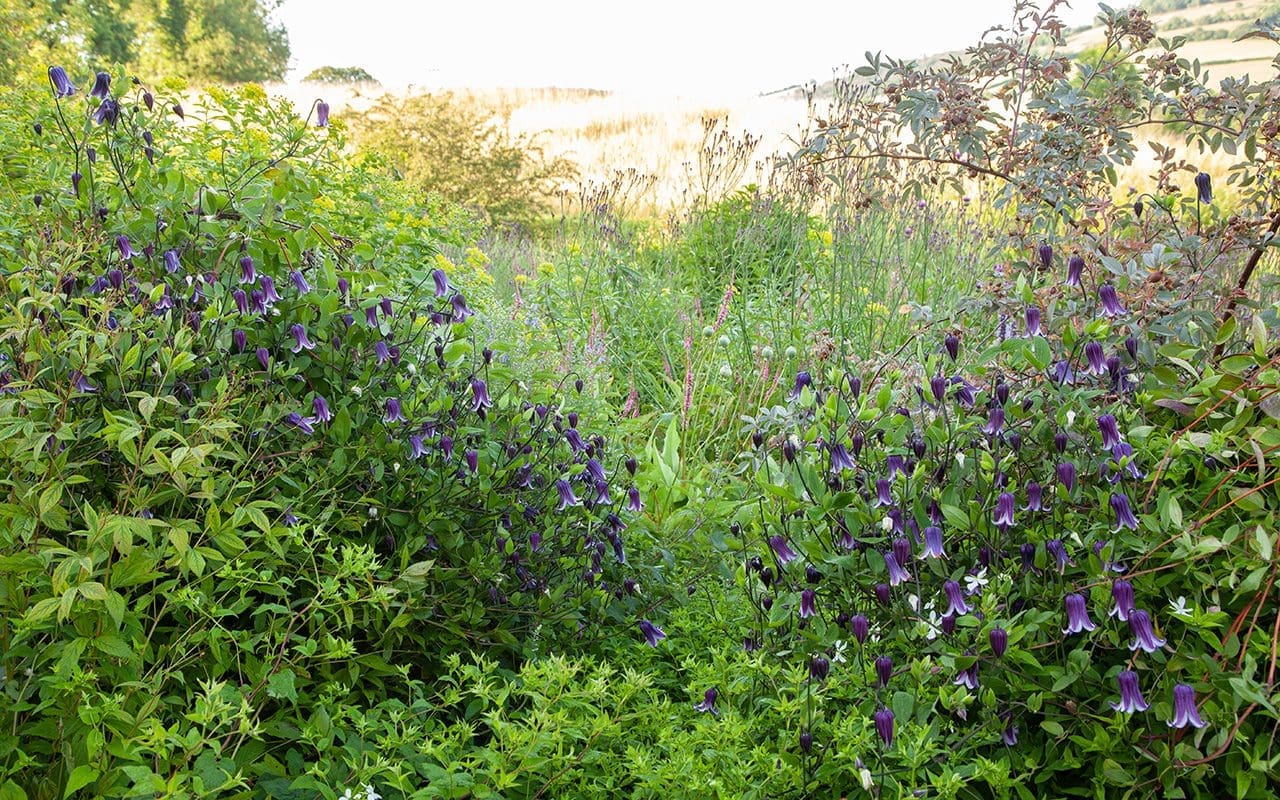
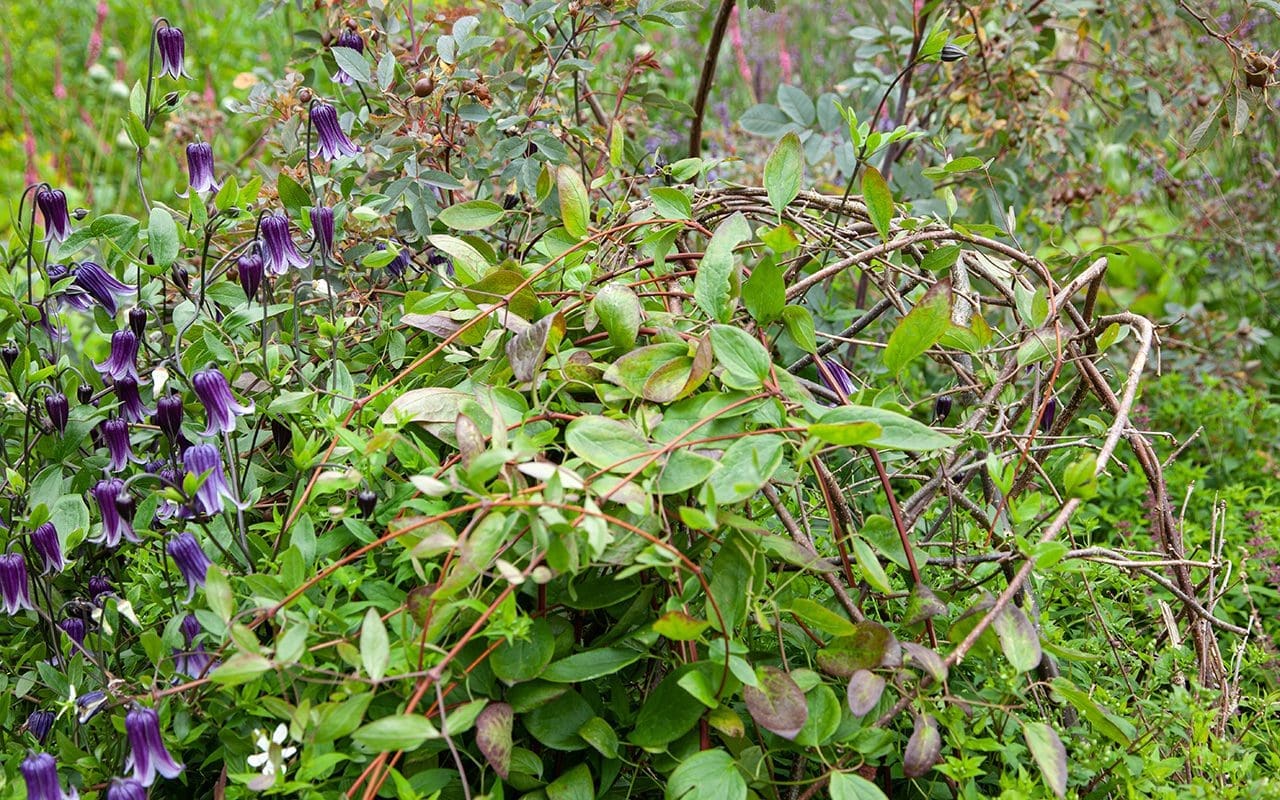
There are a handful of treasures that need a framework to grow up into, for which I am prepared to make the effort. The herbaceaous clematis are sprawling by nature and have not developed the twining leaf stems that their climbing cousins use to lasso their purchase and rise into the light. They grow fast in the spring to get head and shoulders above their neighbours, before giving into gravity and lying akimbo, reliant on whatever company they keep to lift them off the ground. In the wild this would be a shrub small enough to not shade them out or a rock or a bank, but in the garden they need assistance. Enough support to lift them towards you and for them to neither stifle a weaker neighbour nor disappear in the limbs of stronger company.
I have several herbaceous clematis on trial in my stock beds to test their worthiness, but Clematis ‘Rooguchi’ has earned itself a position in the garden. ‘Rooguchi’ is a cross between two herbaceous fellows. The denim-coloured C. x durandii and the Solitary Virgin’s Bower, C. integrifolia. Originally bred by the brilliant plantsman Kazushige Ozawa for the Japanese cut flower market, the integrifolia parent in ‘Rooguchi’ was instrumental in the search for a solitary flower to be used in the Japanese tea ceremony.
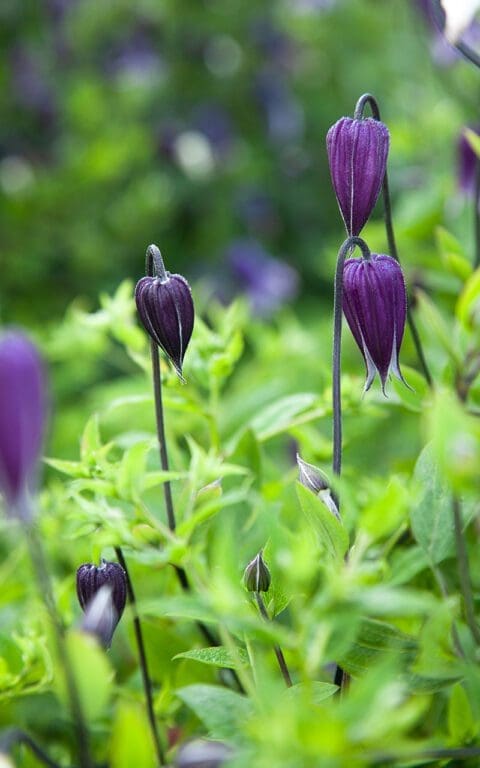
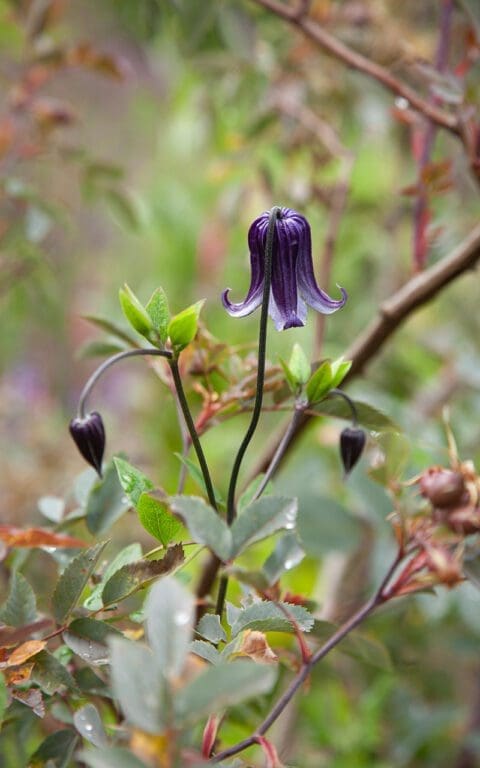
I have two in a bud vase on my desk. A lantern shaped bud which is as dark as blue gets before it registers as black. The darkness extends along the length of the stem so that the flower, which remains crooked, appears to hover. Pleated along their length, the buds swell until they split into four at the base to form a bell, each sepal revealing a paler purple-blue interior and recurving at the tips with a kick to flare the bell. As time has gone by my plants have needed a taller and taller support. This year their hazel cage was woven to chest height, but they sailed out of the top and cascaded back down. If I were to unravel them carefully their stems would be about nine foot in length, which is a consideration given they don’t have a single means of gripping a support.
This is where we, the gardeners, come into the relationship. A well-chosen shrub on the sunny side so that they grow into and over it might be enough support if you weave them a little early in the season. Here we make hazel domes and put aside time to make this effort to help them on our windy hill. An effort that sees us rewarded with flowers that start in the middle of June and may well continue for eight weeks or so well into August. A cut flower in the house will last a week in a cool room. Long enough to take in their poise and rich darkness and certainly long enough to make all the effort well worth it.
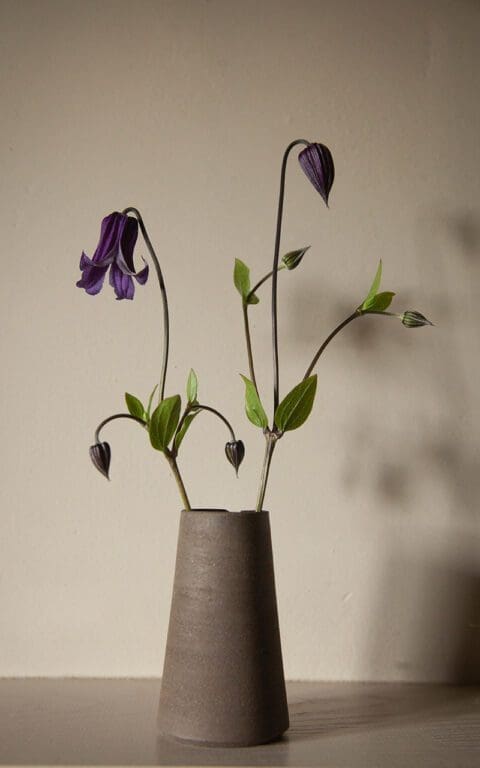
Words: Dan Pearson | Photographs: Huw Morgan
Published 22 July 2023
 Previous
Previous
 Next
Next
